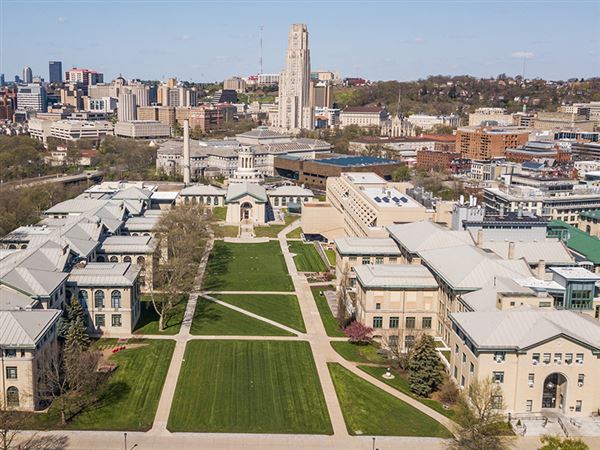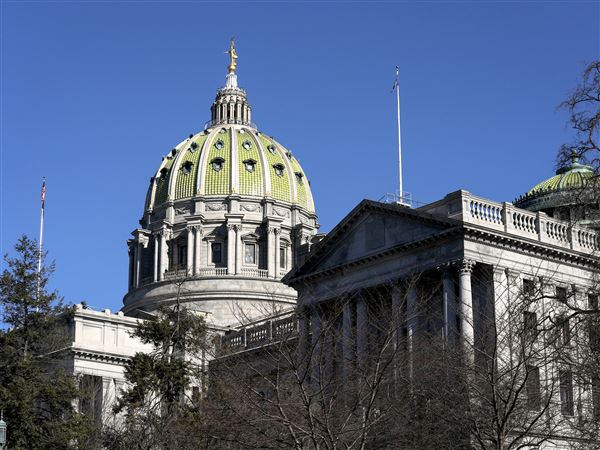If Cleveland can find green solutions to sewage-overflow problems, Pittsburgh can do even better, a church pastor from Braddock told Alcosan officials Friday.
"You have to start over," the Rev. Richard Freeman said of the Allegheny County Sanitary Authority's proposed $3.6 billion sewer improvement plan. "A 'gray' solution is no solution."
Rev. Freeman's reference to a "gray" solution points to what he and other speakers said was the current plan's heavy reliance on bricks-and-mortar improvements to handle the frequent sewage overflows that pollute the region's rivers and streams after heavy rains. The Alcosan proposal calls for the construction of large underground pipes, giant storage tanks and an expanded treatment plant between now and 2026.
Other communities, including Cleveland and Philadelphia, have relied more on environmentally friendly methods for handling sewage overflows, the minister said.
Rev. Freeman was one of more than 100 people who jammed into Alcosan offices on the North Side on Friday. About two dozen people spoke, urging the agency to push for green upstream policies that would slash the amount of stormwater that enters sanitary sewer pipes. Those measures could include such things as rooftop gardens, detention ponds, permeable parking lots and water barrels to catch and slowly release stormwater.
More environmentally friendly methods of dealing with stormwater have drawn support from three of the county's top elected officials. Charles Martoni, president of county council, told Alcosan officials on Friday that a green plan for handling stormwater would produce new jobs and improve the appearance of neighborhoods.
Controller Chelsa Wagner and Executive Rich Fitzgerald, who have had multiple public disputes since both took office in January, also voiced their support for green revisions to Alcosan's wet-weather plan.
A big part of the solution to sewage overflows was keeping stormwater out of sewer lines so it does not overwhelm treatment plants, Mr. Fitzgerald said in a phone interview on Friday. "Otherwise, you can't build enough pipes and holding tanks," he said.
Those attending the meeting represented about 50 religious, community, environmental and labor organizations. Participants held a 30-minute rally, organized by Pittsburgh United's Clean Rivers Campaign, on the sidewalk outside Alcosan's offices before heading inside for the hearing. Many held signs identifying groups with which they were associated, including the Sierra Club, North Area Environmental Council, Action Housing, Nine Mile Run Watershed Association and United Steelworkers.
"We're here to help Alcosan make its decision," Rabbi Ronald B.B. Symons told the group. The sewer agency's 1,100-page pipes-and-tanks proposal represented "a 1950s solution for a 21st-century problem," he said. Rabbi Symons is director of lifelong learning at Temple Sinai and a member of the Pennsylvania Interfaith Impact Network.
Green solutions to sewage overflows have not been adequately considered, Barney Oursler, executive director of Pittsburgh United, told Alcosan officials. "Green solutions would not only help to solve our sewer problem, but will also bring our communities the family-sustaining jobs, revitalized business districts, higher property values, reduced flooding and improved air quality necessary to create thriving neighborhoods," he said.
Ted Popovich of Ben Avon said his community had taken steps 13 years ago to reduce stormwater in sanitary sewer lines. Borough council passed an ordinance in 1999 requiring residents to test and disconnect their downspouts if they were feeding into the wastewater system, he said.
Friday's hearing was the final one of 13 sessions to gather public reactions to the agency's plan to solve sewage overflow problem. The next step will be for the Alcosan board and professional staff to consider the hundreds of citizen comments made and questions raised at the hearings.
The U.S. Environmental Protection Agency has ordered the county to come up with a plan to significantly reduce the 9 billion gallons of untreated wastewater that flows into the region's rivers and creeks each year following heavy rains.
Alcosan has calculated that it would cost $3.6 billion, in 2010 dollars, to carry out a plan that would meet all EPA requirements. The regional agency plans to present an alternative $2 billion proposal designed to reduce wet-weather overflows to less than 1 billion gallons per year.
Alcosan's final plan must be submitted by Jan. 23 to the county Health Department, the state Department of Environmental Protection and the EPA, according to Nancy Barylak, Alcosan's manager of public relations.
First Published: October 20, 2012, 4:00 a.m.
















